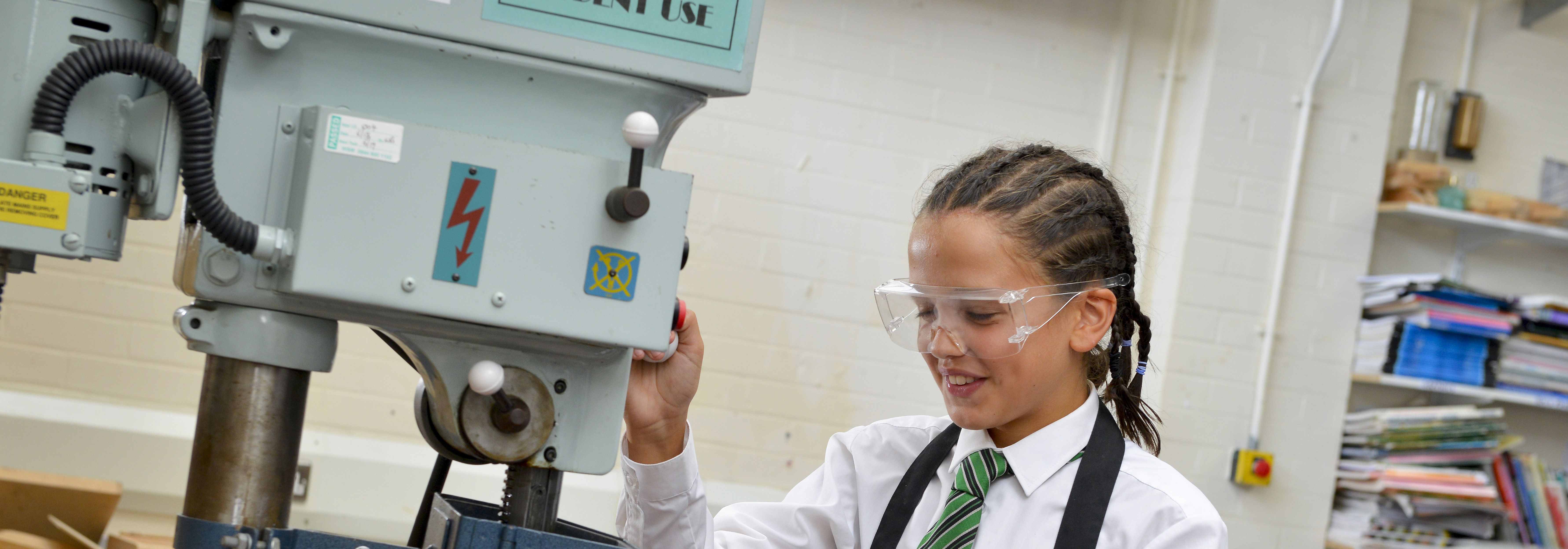The Knowledge and Skills overviews show the specific physics content students will learn in each unit of study throughout the year. These documents outline both the substantive knowledge (physical laws, theoretical models, and universal principles) and the disciplinary skills (experimental design, mathematical application, and analytical reasoning) that students will develop. Each unit is broken down to clearly identify what students need to know and what they should be able to do upon completion. Through the systematic development of both knowledge and skills, students build physical literacy, quantitative capabilities, and a deeper understanding of how the universe operates appropriate to their stage of learning.
Select a unit to find out more...
Movement and Pressure
| Unit Progress Criteria |
| Knowledge |
Skills |
|
Speed
- Speed is how much distance is covered per unit time
- Speed can be calculated using the following equation: Speed (m/s)=Distance (m)Time (s)
 - The SI unit for speed is m/s
- If an object is stationary its speed is 0 m/s
- Average speed is the overall distance travelled divided by the overall time for a journey
- Acceleration describes how quickly a speed is changing (speeding up or slowing down)
- Relative motion describes how different observers judge speed differently if they are in motion too
- If an observer is stationary, the relative motion of the moving object will be the same as its actual speed
- If an observer is travelling in the same direction as the moving object, the relative motion is the difference in their speeds and the object will seem to be moving more slowly
- If an observer is travelling in the opposite direction as the moving object, the relative motion is their speeds added together and the object will seem to be moving faster
Distance-Time Graphs
- A distance-time graph can be used to describe an objects motion
- A horizontal line represents a stationary object (0 m/s)
- A straight line represents an object moving at the same speed
- A curved line describes an object accelerating
- A line that returns to the x-axis (distance = 0) shows an object that has returned to its starting position
- The gradient (slope) of the distance-time graph is the object's speed because this is distance/time
- The steeper the gradient, the greater the speed of an object
Pressure
- Pressure is the force applied per unit area
- Pressure can be calculated using the following equation: Pressure(N/m2)=Force (N)Area (m2)

- Pressure is increased by a larger force and decreased by larger area
Moments
- A moment is the turning effect of a force
- The moment of a force can be calculated using the following equation: Moment (Nm) = Force (N)× Perpendicular distance from pivot (m)

|
Disciplinary Knowledge
- Interpret a line (scatter) graph
- Draw conclusions from given observations.
- Draw conclusions from a graph
- Draw conclusions from a table
- Understand the terms mean, mode and median
- Calculate areas of triangles and rectangles, surface areas and volumes of cubes
- Recognise the importance of scientific quantities and understand how they are determined.
Practical Skills
- Measure time accurately
- Measure motion, including determination of speed and rate of change of speed (acceleration/deceleration)
- Plot two variables from experimental or other data.
|
Magnetism
| Unit Progress Criteria |
| Knowledge |
Skills |
|
Magnetism
- The magnetic force is a non-contact force exerted by magnetic materials on each other
- Iron, cobalt and nickel are magnetic materials, and steel is an alloy of iron so it is also a magnetic material
- Bar magnets have a North pole and a South pole
- The poles of a magnet are where the magnetic force is the strongest
- Opposite poles attract and like poles repel
- Permanent magnets are magnetic all the time
- Magnetic materials and the Earth create magnetic fields around them
- A magnetic field is the area around a magnet that is affected by the non-contact magnetic force
- Magnetic field lines are used to describe the strength and direction of the magnetic field
- The direction of the magnetic field at any point is given by the direction of the force that would act on another north pole placed at that point
- Field lines flow from the North pole to the South pole
- Closer field lines demonstrate that the magnetic force is stronger
- The Earth has a magnetic field
- The Earth behaves like it has a giant bar magnet inside it, because of currents of molten iron and nickel in its core
- A compass will point to Earth's North (magnetic) pole which is different to Earth's geographic North pole
Electromagnets
- Induced magnets are materials that become magnetic when placed in a magnetic field and lose their magnetism when removed
- When a current flows through a conducting wire a magnetic field is produced around the wire
- A solenoid is a coil of wire with a current flowing through it
- An electromagnet is a solenoid with an iron core
- The strength of the magnetic field around a solenoid is increased by adding more turns in the coil, adding a magnetic material as a core or increasing the current
- The strength of the magnetic field depends on the current through the wire, the number of turns in the coil, the core material and the distance from the wire
- An electromagnet can be turned off when there is no current flowing through it
|
Practical skills
Visualise and represent 2D and 3D forms including 2 dimensional representations of 3D objects
|
Resistance
| Unit Progress Criteria |
| Knowledge |
Skills |
|
Resistance
- Resistance decreases current in a circuit
- Resistance is measured in Ohms (Ω)
- The greater the resistance, the slower the current
- Resistance is added by all components, including the wires themselves
- Electrical conductors have low resistance, which means current easily flows through them
- Most metals are electrical conductors
- Electrical insulators have high resistance, which means current does not easily flow through them
- Non-metals such as wood and plastic are electrical insulators
- A resistor can be any component that provides resistance in a circuit
- A fixed resistor has a resistance that cannot change
- A variable resistor has a resistance that can be increased or decreased
- Changing the resistance of a variable resistor changes the current
- Variable resistors are found in circuits where the current needs to be changed, such as dimmer switches
Ohm’s Law
- Current through a component depends on both resistance of the component and voltage cross the component
- Increasing the resistance decreases the current
- Increasing the voltage increases the current
- Current can be calculated using the following equation: Current (A)=Voltage (V)Resistance (Ω)

- Resistance can be calculated using the following equation: Resistance (Ω)=Voltage (V)Current (A)

- Voltage can be calculated using the following equation: Voltage (V) = Current (A) x Resistance (Ω)
- A longer wire has a greater resistance
- Resistance in series is the sum of all the individual resistors
- Resistance in parallel is less than the branch with the lowest resistance
|
Disciplinary Knowledge
- Change the subject of an equation
- Describe mathematical relationships in terms of proportionality
- Describe and explain specified examples of the technological applications of science.
- Describe and evaluate, with the help of data, methods that can be used to tackle problems caused by human impacts on the environment.
Practical Skills
- Use of appropriate apparatus to measure current, potential difference (voltage) and resistance, and to explore the characteristics of a variety of circuit elements
- Use of circuit diagrams to construct and check series and parallel circuits including a variety of common circuit elements
|













